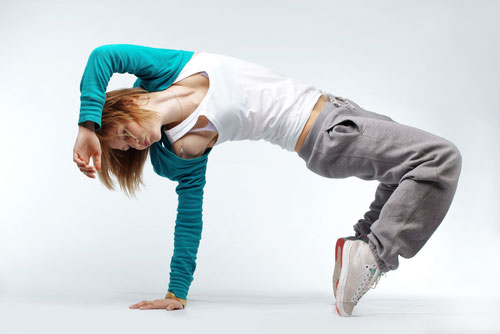Dangerous Moves: More Kids Hurt Dancing

All the leaps, lifts and turns that make dance a breathtaking spectacle to watch also make it a hazardous activity.
A new study finds the number of children and teens injured from dancing is on the rise.
Over a 17-year period, the number of dance-related injuries that sent U.S. children ages 3 to 19 to emergency rooms increased 37 percent, from6,175 injuries in 1991 to 8,477 injuries in 2007.
Of the 113,000 injuries that occurred during the study period, more than half (52 percent) were strains and sprains, and 45 percent were caused by falls. Forty percent of injured dancers were ages 15 to 19.
About one-quarter of the injury reports included information about the type of dance that the kids were participating in when they were injured. More than half of these injures (55 percent) occurred during classical dancing, such as ballet, tap and jazz.
The reason for the rise is not clear. But the researchers suspect it may be due to an increase in the sports' popularity thanks to recent TV shows and video games that feature dancing, said study researcher Kristin Roberts, a senior research associate for Nationwide Children's Hospital's Center for Injury Research and Policy in Columbus, Ohio.
Older teens are more likely to be injured by dancing because they grow more advanced in their skills and spend more time training and practicing, Roberts said.
Sign up for the Live Science daily newsletter now
Get the world’s most fascinating discoveries delivered straight to your inbox.
The study likely underestimates the true number of dance injuries because it does not account for injuries treated in medical centers other than emergency rooms or injuries treated by the dancers themselves, Roberts said.
Precautions such as staying well hydrated, stretching, warming up and cooling down, using proper technique and getting plenty of rest may help prevent dance injuries, Roberts said.
The study was published in February in the Journal of Physical Activity & Health.
Pass it on: Injuries from dancing are on the rise.
Follow Rachael Rettner @RachaelRettner. Follow MyHealthNewsDaily @MyHealth_MHND, Facebook & Google+.

Rachael is a Live Science contributor, and was a former channel editor and senior writer for Live Science between 2010 and 2022. She has a master's degree in journalism from New York University's Science, Health and Environmental Reporting Program. She also holds a B.S. in molecular biology and an M.S. in biology from the University of California, San Diego. Her work has appeared in Scienceline, The Washington Post and Scientific American.










